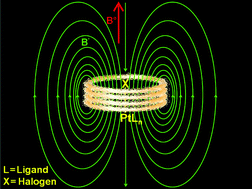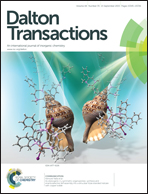General cooperative effects of single atom ligands on a metal: a 195Pt NMR chemical shift as a function of coordinated halido ligands’ ionic radii overall sum
Abstract
An inverse linear relationship between the experimentally observed 195Pt NMR signals and the overall sum of coordinated halido ligands’ ionic radii was discovered in Pt(II) and Pt(IV) complexes. The reduction of 195Pt NMR frequencies parallels the increase of coordinated halido ligands’ ionic radii sum. This suggests that each halido ligand may act as a conducting ring whose induced electric current shields the 195Pt NMR signals proportionally to the ionic radius of the coordinated halido ligand.


 Please wait while we load your content...
Please wait while we load your content...